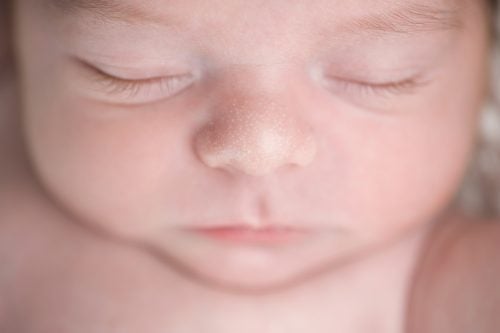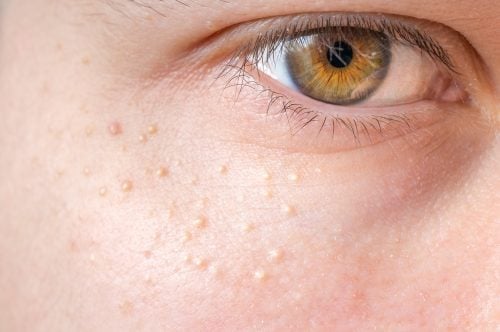- Cryotherapy: This technique uses liquid nitrogen to freeze the milia and is the most commonly used method.
- Deroofing: A sterile needle is used to extract the contents of the cyst, which is a popular approach for treating milia.
- Topical retinoids: These vitamin A-based creams promote skin exfoliation and can help in the treatment process.
- Chemical Peels: These treatments exfoliate the top layer of skin, revealing fresh skin underneath.
- Laser Ablation: A focused laser targets the affected areas to eliminate the cysts.
- Diathermy: This method uses intense heat to destroy the cysts.
- Curettage with Cauterization: The cysts are surgically scraped away and cauterized to prevent bleeding.
- Interestingly, milia have even been treated using a paper clip; however, it’s strongly advised that such procedures be performed by a medical professional rather than attempted at home.
As the body’s outermost layer, our skin is fully exposed to environmental factors, which is why people of all ages and backgrounds experience a range of skin conditions. From psoriasis to eczema, many skin issues are caused by inflammation. However, not every blemish or discoloration requires medical attention. Take milia, for instance.
You might have had milia as an infant without even realizing it.
A milium cyst, commonly known as milia, forms when keratin—a protein that makes up hair, skin, and nails—becomes trapped under the skin. While it is most common in infants, affecting nearly half of them, this occurs because a baby’s skin is still learning how to properly exfoliate. However, milia can develop at any age, often as a result of clogged ducts due to factors like injury or burns.
While milia can occur in both infants and adults, the types of milia differ, and the treatments vary, though they are often unnecessary. Milia are generally harmless and tend to disappear on their own. However, it’s essential to recognize these small bumps to determine whether intervention is needed or if they can be left alone.
Understanding the Various Types of Milia
Milia can be categorized based on the age at which the cysts develop or the underlying causes leading to their formation.
Neonatal Milia

Neonatal milia appear in infants and usually resolve within a few weeks. These cysts are commonly found on the face, scalp, and upper torso. According to Seattle Children’s Hospital, milia affect approximately 40% of newborns.
Juvenile Milia
Juvenile milia can be associated with rare genetic disorders, including Nevoid Basal Cell Carcinoma Syndrome (NBCCS), Pachyonychia Congenita, Gardner’s Syndrome, and Bazex-Dupré-Christol Syndrome.
Milia en Plaque
This type of milia is frequently linked to genetic or autoimmune skin disorders, such as discoid lupus or lichen planus. It typically affects areas like the eyelids, ears, cheeks, or jaw. While it is most commonly observed in middle-aged females, it can occur in individuals of any age and gender.
Primary Milia

This type of milia is found in older children and adults, with cysts often appearing around the eyelids, forehead, or genital area. They may resolve within a few weeks or persist for several months.
Traumatic Milia
Milia can sometimes develop on skin that has experienced an injury, such as a rash or sunburn. In such cases, the cysts may become irritated, resulting in redness around the edges and a white center.
Diagnosis
Because milia are easily noticeable, a dermatologist can typically identify them by examining the cysts’ appearance. Skin lesion biopsies are rarely necessary. If you notice similar small white bumps on your skin, it’s advisable to consult a doctor to confirm whether you have milia and to discuss a potential treatment plan if you’re interested.
Milia Removal and Treatment
Since infant milia typically resolve on their own within a few weeks, there is no specific removal or treatment required.
In older children and adults, milia also tends to disappear naturally, but some individuals may opt for treatment if they experience discomfort. Common removal methods include:
The video below features a dermatologist performing the deroofing method to remove multiple milia.
How to Prevent a Milium Cyst
Although milia aren’t harmful, they can still be visually unappealing. Since milia form due to issues on the skin’s surface, adopting a lifestyle centered around maintaining healthy and clean skin can significantly help in preventing these bothersome bumps.
Shield Your Skin with Sunscreen
Milia is frequently linked to skin damage, so it’s important to safeguard your skin from the sun—whether you’re at the beach, watching your child’s baseball game, or simply soaking up the sun on your back porch.







